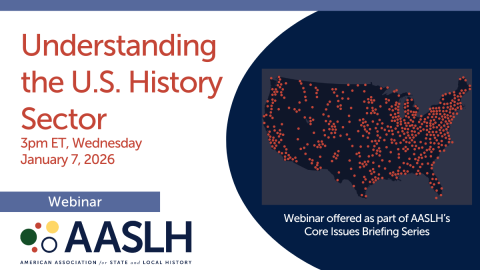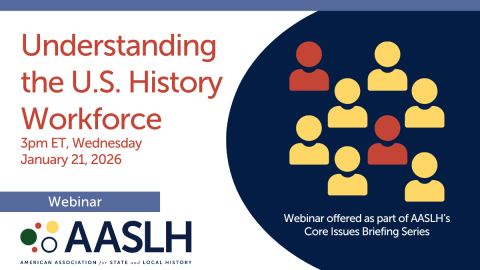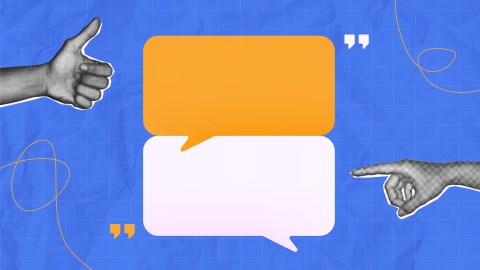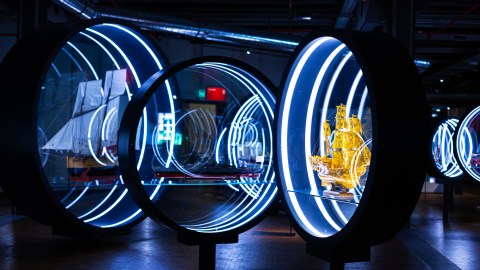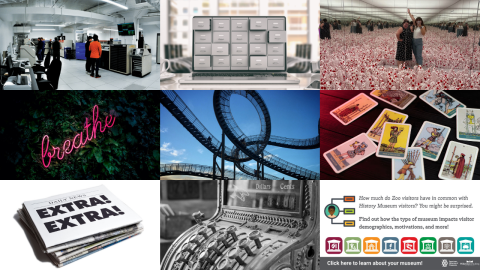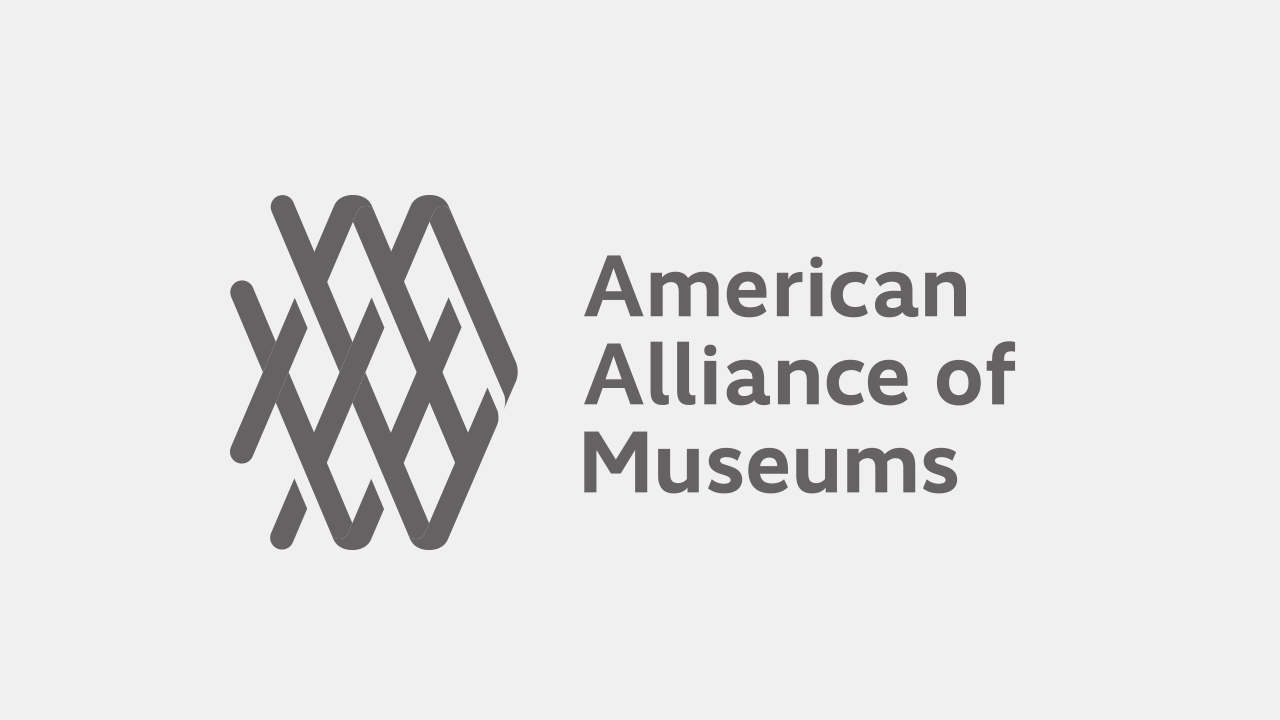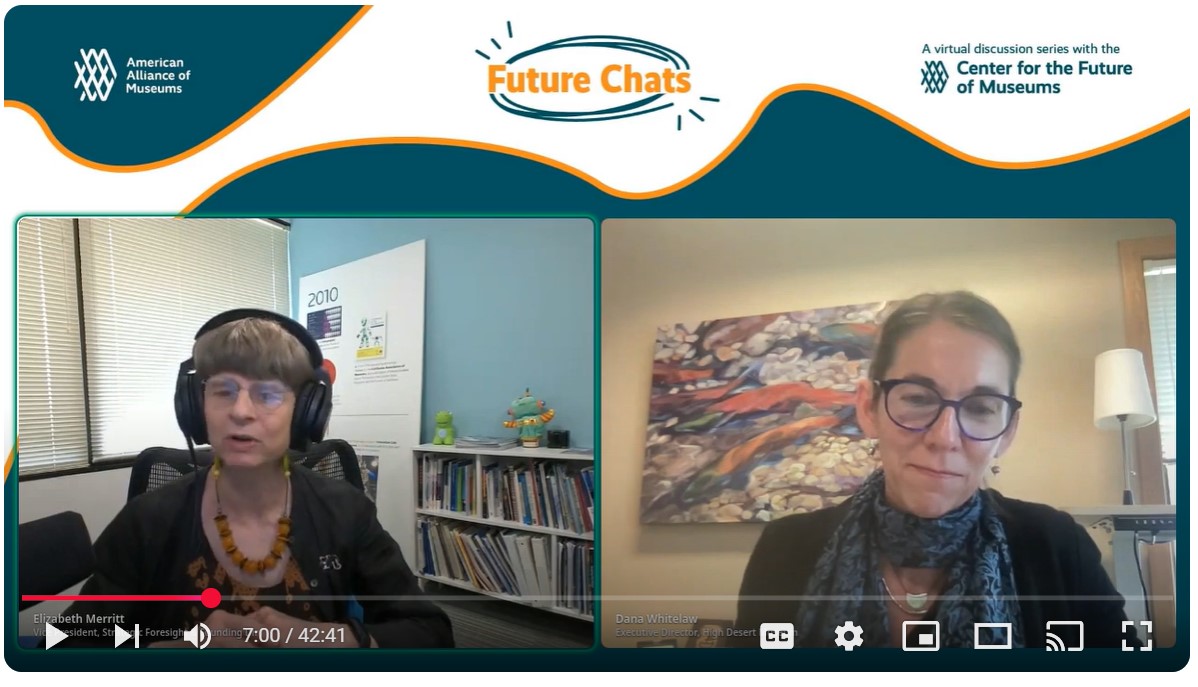
Across the globe, the insurance market is being reshaped by the escalating claims resulting from climate change. The frequency and severity of wildfires, hurricanes, and flooding are driving up claims. In response, the industry is raising premiums, reducing coverage, and, in some areas, withdrawing coverage. To date, the most significant impact of these changes has fallen on homeowners, but the museum sector is beginning to be affected as well. What can museums do to prepare for or respond to changes in coverage? What emerging options, from catastrophe bonds to self-insurance, may shape museum insurance in the coming decades? Watch this recorded webinar with CFM director Elizabeth Merritt in conversation with special guest Dana Whitelaw, Executive Director of the High Desert Museum, to explore these issues.
Transcript
Elizabeth Merritt:
Hello, and welcome to future chat. I’m Elizabeth Merritt, vice president of strategic foresight. At the American Alliance of Museums and founding director of the Center for the Future of Museums. I’m so happy that you could join me for this, our second future chat of 02/2025. We launched this series just last year as an opportunity for me to teach a little bit of foresight, share a piece of news from my scanning.
I share three or four stories from my scanning each week via the free weekly newsletter Dispatches from the Future of Museums. And we’re dropping a link in chat now for how you can subscribe to that newsletter. This is a chance for me to spend some time with you modeling how to think about important news, how to explore the implications of what comes across our feeds every day.
Also, a chance for you to network with your peers, which is something people tell us they want more of at AAM.
The networking will take place in breakout rooms later in chat and also via the chat feature of Airmeet, which I encourage you to use throughout if you’re so inclined, please use chat now to introduce yourself and where you’re from. I see a lot of people weighing in already. Hello? I want to share a few notes on the culture of future chat before we dive in. Notably, confidentiality.
While we’re recording my introductory conversation with our guest, please respect that what’s set in the breakout rooms stays in the breakout rooms. Don’t repeat what anyone else has said, especially not with attribution. We want people to feel really free to share their challenges and thoughts and frustrations without worrying about it being repeated on social media.
So, here’s how this will work. I’m gonna introduce a piece of news from my scanning. And then I’ll introduce our special guest who will help me explore some of the implications of that story. We’ll send you out into breakout rooms with suggest to guide your conversation and then bring you back together at the end of the hour to share some insights.
Please make copious use of the chat throughout, and we’ll do our best to watch and respond. Respond. And also keep an eye on chat for a lot of the links and resources we’ll be dropping in there. Okay. Our topic for today is the impact rising climate risk is having on the cost and availability of museum insurance and here’s the story from my scanning that will anchor our discussion.
It’s an article from the Center for American Progress that appeared in April 2025 with the headline, managing the climate fueled property insurance crisis. Here’s a synopsis of the story.
Due to climate change, events such as the Los Angeles wildfires and Hurricane Helena are becoming more frequent and intense. In 2024, The United States sustained 27 different billion-dollar weather and climate disasters totaling a $183,000,000,000 in damage. Clearly, the physical world has changed, and the cost of climate related events is increasing. More must be done to lower these risks and move away from the carbon intense activities worsening these conditions.
Insurers are responding to heightened losses by reducing coverage exiting high risk markets, and dramatically raising premiums. For many, insurance coverage is unavailable or unaffordable leaving them unprotected from disaster. As former California insurance commissioner Dave Jones has warned, we’re marching steadily towards an uninsurable future. That’s the line that caught my attention. We’re dropping a link to the full story in chat Now I’ve talked to a growing number of museum directors who tell me their insurance premiums are soaring, and in a few cases that they’ve been unable to obtain coverage in the wake of climate related disasters.
So, what does this trend presage for the future of our sector and for your organization? How can we ensure that we have the coverage we need to continue our work?
Before I introduce our guest for today’s chat, I’d like to get a feeling for your experiences with this trend. So, we’re gonna put a poll up on the screen. Please answer it. It’s gonna ask you which of the following you’ve experienced your museum and be patient. Sometimes it takes a moment for the poll to appear.
So, the question is, has your museum experienced any of the following incidents? Or changes driven by rising climate risk? And that could be claims from climate related events like flood or fire or storm. It could be higher premiums. Difficulty obtaining insurance coverage, inability to find coverage, You could say no impact yet, but we’re worried about it.
Or you could say, we’re working with the board on planning for this. Please choose all that apply. You don’t have to pick just one. Now you may have to most mouse over the poll and scroll down to see all the action. All of the options. So, when you look at your screen, you may have to mouse and scroll to see which ones you can click and vote for.
Now what we’re going to be doing is displaying the results as they come in, I’m gonna wait for that. And while you are answering, I’m also looking to see who’s in the room. Wow. We have people from all over the country.
Arizona Capital Museum, Historic New England, somebody from Omaha, Cleveland. Hey. That’s my hometown. So, let’s see. Okay. I’m seeing the results here. Wow. Nearly a quarter of people in this room have seen higher premiums that scary.15% had claims already from a climate related event, also scary. I’m a little relieved that 44% of people have said no impact yet, but still, something to keep an eye on. Okay. And over 10% of you are working with the board. Awesome. So, I hope that this is a very timely conversation.
That will inform those discussions with your leadership. With that preamble, I’d like to bring on stage our chat guest for today,
Dana Whitelaw: joined the staff of the High Desert Museum in Bora on in 2008 and has served as its executive director since 2014. Raised in Oregon, Dana earned her doctorate from the University of Colorado Boulder in biological anthropology, conducting research that took her to Madagascar, South Africa, Kenya, Ethiopia, and China.
Elizabeth Merritt:
Under Dana’s leadership, the high desert museum became a Smithsonian affiliate, has experienced record attendance, and earned the prestigious 2021 national medal for museum and library service. Dana also has just begun a three-year term as a member of the Alliance’s board of trustees. Dana, welcome.
I’m so glad to have you with us today.
Dana Whitelaw:
Thank you.
Elizabeth Merritt:
Based on your experiences, what are some thoughts you’ve had about this signal of change?
Thanks, Elizabeth. Our signal of change began in about 2019 and into 2020 when not only was the COVID pandemic launching, but we were starting to see our insurance coverage change. And the changes were profound for us, meaning that the premium is doubling the coverage is dropping, the deductible is going up 10 times, but we had previously been used to seeing And then over the years since then, that pattern has gone up exponentially for us. So that was the context of needing to rethink how we think about insurance.
Well, how did you respond to those challenges?
Dana Whitelaw:
A few things, that I’m gonna talk about the useful things because there were some un useful things that we some paths that we pursued. But the useful things that, for us included getting together a board working group. Getting some of our board members who were interested in delving in more deeply, looking at these numbers together, finding a solution. And I’ll put that into the bucket of we, at the staff level, need to wrap our heads around this, and we need to bring our board along and kind of socializing these ideas that we’re gonna need to think about insurance differently. And what I find interesting is what a culture shift that is because we have this model of insurance that we were comfortable with and that that would take care of us. And it was affordable. And that direction stopped so abruptly that we needed to it was a paradigm shift. In bringing our board along as we were learning all of the, the nuances was really important.
Elizabeth Merritt:
So, when you were socializing your board about these ideas, what sort of things did you actually put into practice to begin mitigating some of the risks?
Dana Whitelaw:
A few of the other useful things that we started doing, reaching out to peer organizations and under understanding what they were doing. So, there were a couple of different levels of mitigating risk. Understanding what options there were. And then specifically, I should have mentioned this earlier, the high desert Museum is nestled in a ponderosa pine forest. We’re on a high 135 acres, and fire is our biggest risk. As an organization. We are neighboring with the Deschutes National Forest. And so, it was the fire risk, that was pushing these premiums up so dramatically. And what immediately we could do was starting to mitigate our fire risk, fuels reduction building hardening, and one of the really useful tools for those of us who live in the West, is prescribed burns. And so, we had done one in 2018, ’18 on our property burning about 80 acres. We, redid some of that burning in 2021, and that was also some of this culture shift There aren’t, you know, our trees are part of our
Elizabeth Merritt:
Yeah.
Dana Whitelaw:
action, and we need to take care of them. And reintroducing fire into the landscape. Huge
Elizabeth Merritt:
That’s I could see without the scary. It’s like, here’s our property. We’re gonna burn it down to make it safer.
Dana Whitelaw:
Exactly. And, for board members taking on fiduciary duty of keeping the museum safe, there were some that were like, yeah. All in. On doing a prescribed burn and others that were like, let’s talk about this first. And one of the things that we started doing at board meetings was bringing in experts and working with our forest service partners to come in and, again, socializing these ideas, fire on the landscape, can be, can be safe, It is actually gonna make our forest healthier and make our museum more resilient.
Elizabeth Merritt:
Yeah.
So, you’re really proactive saying we can change the risk. Here are things we can do to lower the risk. So did that help with the insurance companies when you went and said, we did these great things.
Dana Whitelaw:
Well, we did so many great things with fuels reduction, and I was so excited to go back to the insurance company and have them start reducing our premiums based on this reduction in risk that we’ve been implementing, and it didn’t make a difference. They, in conversation, could say that is great. We definitely encourage all those risk mitigation efforts, but it is not going to make a difference. And much to our dismay, those dramatic differences in premiums and coverage dropping and deductibles going up that scenario is still is still playing out. We had some pretty significant choices to make Do we continue to pay these higher premiums for a lower limit in terms of our coverage. And the math
Elizabeth Merritt:
Yeah.
Dana Whitelaw:
does not work out in our favor. And it became evident to our CFO and me that we should be putting this money into risk mitigation and hardening our building. Rather than paying for what would inevitably be not a way to replace our building if something catastrophic happened.
Elizabeth Merritt:
Wow. That’s a real shift to go from insurance coverage as just a norm of practice saying we could use the money better and make sure we don’t have a claim.
Dana Whitelaw:
Exactly. And searching for some models, to do that, there are other museums and some zoos that are taking on a different model of self-insurance. And that that became, something we needed to learn about because what does that really mean? And
Elizabeth Merritt:
Yes.
Dana Whitelaw:
is it really attainable? And starting to put away money for reserves while also actively, mitigating the risk, continuing the fuels reduction, which is not a onetime project, but an ongoing endeavor. Hardening our building, can we implement sprinkler systems around? And what would the cost of that be? And is there any federal funding there used to be that could help us with that? And then there’s some other really cool models that became aware of as I started exploring this where organizations of, like entities, like higher ed, will pool their risk. So, the universities in Oregon, for example, pool their risk. And so Southern Oregon University has high fire risk, but
Elizabeth Merritt:
Yeah.
Yep.
No.
Mmm.
Dana Whitelaw:
the universities in Portland have a higher seismic risk. And so, they can pool those variables, and it decreases the cost overall. So
Elizabeth Merritt:
Interesting. And in in that case, do they all belong to the same parent organization? So
Dana Whitelaw:
There’s a couple of different ways it can happen, and this is where my knowledge of the details is going to run out. But there is, you know, a higher ed consortium in the state that can help mitigate that. Now some of the universities do it a little bit differently, and they will self-insure to a certain limit. Like, let’s get a reserve together to 5,000,000 and then purchase reinsurance, which is cheaper because you’ve mitigated the highest risk at those first levels. So that’s a really intriguing model. That we’re gonna look into more. We’re still early in our learning curve as is the insurance industry, I think. And we’re on this.
Elizabeth Merritt:
or did they form a separate coalition?
Yeah.
Sure.
Yeah.
That’s very interesting. And I know I’m not an expert on this, You’re not an expert on this, but you have way more experience than me. Could you just say another few words about reinsurance in case it’s a concept that’s not familiar to our audience? Yeah.
Dana Whitelaw:
So, my understanding with reinsurance is you pay the highest premium for that first level say that’s up to $5,000,000 for some of our organizations. And then but say I wanna re, ensure my organization, my buildings, my assets to 25,000,000, then typically the first insurance company that you access will then go out and get reinsurance and, sometimes other insurance companies will say, well, I’m not gonna take on that first 5,000,000, but I’ll do the second 5,000,000 at a lower premium rate.
Elizabeth Merritt:
Right. The risk. Yeah. And a lower risk. Yeah. That makes sense.
Dana Whitelaw:
And a lower risk because you’re more likely perhaps to have a fire in your cafe. Than you are to have a catastrophic wildfire. And, and a cafe fire is gonna be below that $5,000,000 limit. So, they’re gonna take on that higher risk. So
Elizabeth Merritt:
Yep.
Right.
Right.
Right.
Yes. Yes.
Dana Whitelaw:
could is there a model where a museum like the High Desert Museum could take on, start a reserve for 5,000,000 and in essence be become our own insurance company. And, again, this is where we need to my details get a little bit fuzzy in exactly how that would work, but then we could purchase reinsurance top of that for a lower premium.
Elizabeth Merritt:
Yeah.
Dana Whitelaw:
Be more fully insured and be using our dollars. In a more efficient way.
Elizabeth Merritt:
Yeah.
Yeah.
That’s another thing I’d like to spend another minute on is this concept of self-insurance.
Dana Whitelaw:
Yeah.
Elizabeth Merritt:
I did a little mini dive into this back in 2009 when I was working on a book about assets and museum stewardship of assets. And, when I was asking museums about insurance, some of them said, well, we self-insure. So, I did a little poll, and I said, well, what do you mean by that? And it ranged everything from, well, we set up a fund and we manage it. We have all of these agreements about how we would assess damage and how it would pay out. Down to some museums that meant, well, we’re not insured, but if something happens, we’ll figure out how to take care of it. And hope that it doesn’t happen. I think this question of self-insurance really needs to become normalized in the museum field so we know what it means and that it’s not just hoping that nothing happens and that you can find the money to pay for if something did.
Dana Whitelaw:
Exactly. And putting some named funds aside. For that and using, if we’re lucky enough to have a surplus, at the end of the year, that that goes into this designated fund. And a lot of museums might already be doing this. That’s your rainy-day fund, and your perks that you’re putting away. And in some ways, you’re self-insuring already. So those are some,
Elizabeth Merritt:
Yeah. Yeah. Yes. Yeah. Yes.
Dana Whitelaw:
I think it’s important to start using that that terminology in bringing our words along that we are planning for these bad things to happen. Not just hoping that they won’t.
Elizabeth Merritt:
Yeah.
Dana Whitelaw:
In in smart ways.
Elizabeth Merritt:
Well, you had mentioned earlier that there were some things you tried that weren’t so helpful. I’m a big fan of the theory that you learn as much from failure as you do from success. So, was there anything you tried where you’d like to share with the audience? We tried that. It didn’t work. Just so you know.
Dana Whitelaw:
I think the major ones that were so disappointing to me were doing these risk mitigation efforts of fire, following Firewise, procedures and practices. And for those who are less familiar with those, there’s there are certain parameters around buildings
Elizabeth Merritt:
Mmm.
Yeah.
Yeah. To the insurance company. Because there’s still great practices for you for reducing risk.
Dana Whitelaw:
that you wanna reduce. Have no vegetation between zero and five feet from your building. And then at 15 feet out, you want less vegetation and no trees and then up to 30 feet. And so, pursuing those, and then thinking a lot of it, the unuseful things, we’re thinking that these were things that we’re gonna make a difference. A difference to the insurance company.
Absolutely. Absolutely.
Elizabeth Merritt:
So do you think we haven’t talked about this before, but do you did you get the feeling that the reason it did not make a difference to the insurance company is they’re looking at the stats for the areas So they’re not looking at you specifically. They’re not actually assessing your practices. They’re saying in this area of Oregon, this is the fire risk.
That’s what it is, and that’s what set the rate.
Dana Whitelaw:
Exactly. It’s less you know, I have this myopic view of my organization, all the great work that we’re doing, on fuels reduction, and they’re looking at the Labor Day fires in 2020 that occurred in place
Elizabeth Merritt:
Yeah.
Yeah.
Yeah.
Dana Whitelaw:
that typically don’t burn in Oregon. And so, my insurance scope needed to become bigger
Elizabeth Merritt:
Yeah.
Dana Whitelaw:
understand, excuse me, how we could mitigate that.
Elizabeth Merritt:
Yeah. And understand where they’re coming from to see what kinds of conversations would be useful.
Well, that was a great introduction to the topic.
Now we’re gonna transition to another regular feature of our future chats, by giving our audience a chance to talk with each other as peers. We’re gonna break the audience out into discussion rooms. With a couple of questions to frame your conversations, and then we’ll be bringing you back together with us in, twenty minutes to compare notes and share thoughts. Now please remember, one rule of future chat is that what said in chat stays in chat. Please hold anything that’s shared by your fellow attendees in confidence and don’t repeat their remarks with attribution.
A couple of notes about the breakout rooms before we start. We’re gonna send you out into rooms of eight. But for various reasons, you could find yourself in a room yourself or with only a couple of other people. And you can join use the join feature to go to another room and move into a room with other more people. And we’ll keep an eye on that and try and help you if you’re having trouble.
Please enable your mic and video on your controls to allow other participants to see and hear you in the rooms. If you’re joining us via a mobile device, it may not work. It’s just our experience with this platform. Sometimes mobile doesn’t allow people to participate in the breakout rooms. I’m sorry about that. If it’s the case, I encourage you to step away and reengage with us at 03:40PM eastern. That’s 12:40 Pacific. And we’ll be inviting people to share their thoughts from their rooms and talk about it.
With that in mind, here’s your assignment for the breakout rooms. First of all, go around the circle of your room and make introductions, who you are, where you’re based, your organization, This should be a lightning round. Make your introduction super short. So that you can focus on the following two questions.
What are the greatest climate related challenges facing your institution? So, what are the biggest climate risks for you where you’re situated? And the second is what challenges are you facing related to insurance claims or coverage?
K? So, first question is about risk. Second question is about coverage.
Now we’re gonna start flipping you out into breakout rooms. And I’ll watch while that’s happening and see how this goes. And then we’ll be bringing you back into the room at forty minutes past the hour.
Welcome back.
Dana Whitelaw:
It’s a great question, and,
Elizabeth Merritt:
Please, in chat, could you begin to share some of the ideas that surfaced in your discussion rooms? I’d like you to tell us a little bit about what you were hearing from yourself. About the greatest climate related risks facing your institutions, what challenges you’re facing related to insurance claims or coverage, and also any other issues that came up that you think would be interesting to talk about insights that people surfaced that were particularly helpful, questions that you’re for answers for.
While you’re beginning to type in the chat, because I know it takes a minute, we’re gonna share some resources from AAM on climate risk and insurance. We’ll be dropping links to these in chat as I talk about them. We have an article by Joe Dunn, who’s president of Huntington T. Block Insurance Agency on preparing for future weather change.
We also have two events coming up. We thought you’d want to know about. One is museum exhibition materials pledge, sustainability goals into action webinar. Let’s reduce climate change where we can. That’s gonna be on July 17. And axe ask the expert collections insurance in August. So, we have a link to that event as well.
Awesome. So now, Dana, I’m keeping my eye on just to see what people are talking about. We also have a question from Anne Forte executive director of the International Museum of Art and Science. In McAllen, Texas. For those of us in municipal museums or buildings owned by a public entity that self-insures, its structures, what should we be doing to be what should we be attentive to when mitigating our risks? Okay. So, Anne is asking if you’re in a municipal museum, they own the building. Itself insures.
What should the museum do to be attentive to mitigating risks. Do you have any follow-up? I’m Anna. Mmm.
Dana Whitelaw:
and, you know, what was interesting in our breakout room, we had, a water contingency and a fire contingency. Those were our major risks. Whether you were in Hawaii, you’re on the East Coast, or those of us in Oregon. So, I think it my mind goes to, you know, what is the most the risk at the high at the top of the list. For you in in Texas. And making sure that, you know, that what you can do with you and your staff and your board, is being attended to. And I’ll go back to one of the useful tools that we’ve had is bringing in the forest service to hear know, what is the risk for our location, What are our neighbors, the forest service, doing? How can we build on and leverage the tools that we have with our forest. So, and that’s a thought that comes mind for me is working with your neighbors and partners to, you know, kind of reduce the risk to your immediate place.
Elizabeth Merritt:
I’m just watching some of the comments. Of people reporting out. And Mary Irvine from the Alaska State Museums was saying that they talked a bit about pooled nonprofit insurance coverage. Sounding very promising.
Yes.
I’d like to hear more about that too. So, I’m gonna make a note to look into that. It’s something I will write about if I can find some information to share.
Dana Whitelaw:
Yeah. I think that there are some areas of the country that are, that are ahead and some that are behind. I think California has some interesting mechanisms there. And because this is one thing that I’ve learned going down the pooled risk and pooled insurance path is that because states approve and have different ways of rating insurance companies that tends to be very state
Elizabeth Merritt:
Yeah.
Dana Whitelaw:
based. And that could be something interesting for the museum sector to share some knowledge. That way. Because then again, that’s advocacy and legislative change to make sure that nonprofits and museums are included in those mechanisms.
Elizabeth Merritt:
Yeah. I if I was also, if I go hunting, I will go hunting. To see what’s happening in certain states. Gonna look at Florida because that is one of the states that is having the largest crisis of insurance companies pulling out and refusing to cover individual homes at least. And so, sectors because of rising risk. So, I was wondering if the state was dealing with supporting pooled risk at any level.
Dana Whitelaw:
And I see thanks, Roger, for your note about the risk pools in in Oregon. I am aware of that, and our broker it’s a path that I’m still continuing to seek out. Our broker had, some cautionary tones about that for us, and I need to go back and look at the details. But I think that that is a, potentially a really interesting avenue.
Elizabeth Merritt:
I’m gonna just throw out there a sort of fringy emerging utt.
Tactic for dealing with this that I had mentioned to Dana. I have not found any museums doing it yet, but I’m gonna mention it to all of you. Maybe you can get back to me with examples. There is something called catastrophe bonds.
Which are an alternative to traditional insurance. And in a well, in a traditional insurance, you get insurance, you pay a premium, the insurance company is betting that the damages won’t happen. Covering yourself in case they do. There is a problem. There’s an incident. They come in and they estimate well, here was the damage. Here’s what we’ll give you. And eventually, you get a payment. And the problem is there can be quite a long lag in time between there being a hurricane or storm or a power outage or whatever, and you’re actually getting the payout. You don’t know exactly what you’re gonna get till they come and do the assessment. In a catastrophe bond, an entity that decides to put together the bond goes to investors and says, look, Here’s this really great investment opportunity. It’s gonna be putting your money into a high yield asset. And what we’re gonna do is we’re gonna say, these are these are the conditions under which the bond will pay out to the insured parties. If it’s a CAT form CAT five storm, if there is, you know, three feet of flooding, if the temperature goes down to minus 30 degrees centigrade, whatever,
And so instead of and if that happens, this will be the payout. So, the triggering incident determines who gets paid and when immediately, and there’s no lag time. So again, the investors are betting that won’t happen.
The people who are covered have the benefit that if it does happen, they know they’re gonna the money and they’re gonna get it right away. So far, I’ve only found examples of, like, state entities buying this coverage, or governmental energy. Entities, whether it’s a city or a state or a region. But I’d love to know if there are any non-profit coalitions that have negotiated that or if there are any museums that are covered under these governmental negotiations.
So, I’m just gonium gonna drop that term in chat just so you have it in front of you, and I’d love to hear back from you.
Dana Whitelaw:
There was another there was a new term that I learned from Jason in Hawaii on parametric insurance, and we didn’t have a chance to go further into that. And thanks for the cat bond discussion. I feel like it might need another deep dive I wanted to flag that if there are other folks that have that on their radar. And it sounds like it could be in thein the catastrophe bond kind of realm, but I’m interested in learning about that.
Elizabeth Merritt:
Okay.
Parametric insurance. Alright. I’ll note that down and put that on my follow-up list as well. Sarah Sutton has dropped in a link to documenting current and few future climate risks. Yes. Absolutely. The FAIC resources.
Fabulous. And Reid dropped in the parametric insurance, maybe similar to catastrophe insurance. Okay. We’ll definitely follow-up about that. If I get enough material, I’ll do a blog post on the CFM blog about it so that we can share what we find.
Alright. Well, we’re getting close to the end of the hour, so I wanted to gonna peek and see if there are any more questions.
Nope.
We’re all. I’m gonna wrap up by making a couple of observations that I would like you to take away from this discussion. And maybe we could talk about this a bit as we rift towards the end of the hour.
First of all, climate risks are escalating rapidly across The US. And especially under the policies of the current administration there’s no signal that that’s gonna slow down, certainly not from the efforts of The United States.
And even if your museum has seen no impact on your insurance until now, you may well do so in the future. So, it’s not just a matter of watching what’s happening right now. It’s a matter of applying some foresight. Doing some futures thinking, saying, what can we find out there that suggests what’s happening in our region? Gonna be like in ten years or twenty years? And normalizing that conversation with your board, as Dana said, is starting to tell them so that they know this is going to be a problem. It may not be a problem this year, but gonna be an increasing risk over time.
We’re gonna drop a Sarah may have already dropped this into chat. But we’ll drop it again. Here’s a link to the climate heritage risk assessment map. From the FAIC.
And this is something that you can use to look up the climate risk now and over a period of time in the future for your specific area. It’s a very graphic and, easily understood way to present the data to your staff, to your board, about what your institution and your community is facing in coming years. Dana, when you look at the chat and you think about what people discussed in your in your breakout group, what do you think people might be thinking about? What might they take out of this and take back to their organizations and begin to operationalize?
Dana Whitelaw:
Well, I’m so happy to see this topic, and this level of engagement in the museum sector. It’s something, like I mentioned before, we’ve been looking for partners and conversation to navigate these challenges since 2019. So, I’m really grateful for the community of practice. And another thing that I wanted to reemphasize was some of the advocacy work that I think our sector needs to do. And one of the things that came up for the high desert museum and looking for fuels’ reduction funding, which there there’s quite a bit in Oregon. But when I when I started pursuing those funding opportunities, to, you know, do more tree removal and defensible space work around our museum, I found that those grant programs were only available for residents, for residential properties, or commercial properties. And nonprofits like the museum weren’t eligible. And it I think it was just because we weren’t at the table when they were drafting some of that legislation. And so, I want to give a voice to the advocacy work that AAM does that you can do with your local legislators. On making sure that museums and cultural institutions are thought of when, folks are developing is, climate impacting legislation in our in our different states, whether it’s water and flooding or fire risk. And, and being vocal.
Elizabeth Merritt:
Yeah.
Mmm. Yeah.
One thing you mentioned earlier was that your property is adjacent to a national park. Correct?
Dana Whitelaw:
National Forest.
Elizabeth Merritt:
National forest. So and so who staffs the national forests?
Dana Whitelaw:
Well, it’s the USDA. And our forest service, our district, the Deschutes National Forest, closest to us. Yeah.
Elizabeth Merritt:
Yeah.
Do you know if that department has been, impacted so far by these the staffing reductions across the board in the government?
Dana Whitelaw:
They have, and a lot of they went through the staff reduction. And then because of the wildfire risk in our area, they were able to get many of those staff positions back. And
Elizabeth Merritt:
So, they lost it, and then they said this is what’s gonna happen, and then they were able to rehire.
Dana Whitelaw:
exactly.
Elizabeth Merritt:
Because that seems to be to be another risk to factor in that, you know, a lot of these changes, the risks even though, geologically speaking, the risks are changing pretty darn rapidly,
It’s still something that’s increasing over time. Another risk that has happened very suddenly, is this issue of what are things you could count on last year to help you with mitigation, which this year may suddenly not be there as a safety net to increase the risk. And this hadn’t occurred to me until we were talking, but whether it’s national forests, and Department of the Interior, whether it’s National Park Service, because I know they’ve had huge cuts is that going to be something where, museums on prop that are anywhere near those areas are going to face a higher risk because those people aren’t able to do the work they’ve been doing for the past decade to deal with problems. Yep.
Dana Whitelaw:
Yeah. I think that’s a great point. We are and wildfire mitigation are continuing but that’s certainly not a guarantee, into the into the future. And I appreciate, Wendy, your comment about a larger group project for some state and federal advocacy around working on some of the risk mitigation that we could do. And, not to get too much on the advocacy soapbox, but I think it’s so important to make sure that our elected officials understand that the implications of a more catastrophic loss at our cultural institute institutions. It’s not like, you know, replacing all property loss is, is horrific. But with our collections and the decades of scholarship and care that goes into our organizations. That loss is so, so significant and profound. And I think I love the idea of larger group project to
Elizabeth Merritt:
Yes.
Yeah.
Yep.
Dana Whitelaw:
work on state and federal advocacy, and that’s probably a longer term, project. But and thanks, Ariel, for putting that in. It’s a great time to invite Congress to museums and talk about that climate risk.
Elizabeth Merritt:
Thank you. That’s excellent. The other thing, as I’m thinking more about this question of what safety net used to be there that aren’t there anymore, for fire, it’s often things like the federal the federal forests and the National Park Service. I would think for a lot of museums that are in communities that are flood risk, it’s the corps of engineers.
And now I’m gonna go look because I haven’t seen any about how any current actions have affected the core of engineers if it has. I’ll be looking for that. If anybody in the audience is, in areas that had flood mitigation projects that were being administered or funded by the corps. I’d love to hear about it.
Oh, here’s a really interesting question from Oscar.
Is there anything about insurance covering salaries or wages for staff if your building was impacted by a natural disaster? Would that come under business interruption insurance? The other thing I wanted to bring up,
Dana Whitelaw:
That’s my understanding. When we’ve explored that with our insurance company, that would go under the business interruption loss. It’s something to double check. We do have, a few folks from the insurance sector on the call if, if they wanna throw something in the chat. That’s a great question.
Elizabeth Merritt:
I’ve been studying some financial data about, financial reserves in the nonprofit sector.
And it used to be considered that having six months of reserves was, oh, you’re solid. Great. That that’s an awesome There are many museums that don’t have six months of reserves as we found during the pandemic. But with there being so many sources of potential building closing, business interruption sources, whether it’s the next pandemic the bird flu the next time, or whether it’s a natural disaster, or whether it’s, a financial crisis due to the drop in travel and tourism.
It seems like maybe there’s going to be aa require a need for museums to increase their overall financial reserves to have a deeper bucket to draw on when there are problems like that. And that’s part of this, how do you support your staff if there is an increased risk of closures for extended periods from any one of these source Right.
Dana Whitelaw:
Mmm. I think that’s a great point and something, again, to bring the board along with and, you know, that reminder that funding is so important. And I wanted to emphasize too one of the risks in Oregon are smoke related. So, we might not have a fire near us, but we have significant air quality issues And I’m sure that there’s a parallel in the water and flood and flooding world. Where it might not be immediately impacting or damaging your building, but business is gonna be interrupted. And
Elizabeth Merritt:
Right.
Well, and if absolutely. And if you expand it to include business interruption, extreme heat. We got museums now that are having to close for periods because it’s over 120 degrees effectively during the day, and they can’t be open for business. And that’s
Dana Whitelaw:
Yeah. Thanks, everybody. Take care.
Elizabeth Merritt:
business interruption effectively. Now I’m gonna have to start looking at some business interruption policies and see how they define it.
Let’s really geek out. Well, we’re getting close to the end of our time. It’s been fabulous spending a little bit of time with you all talking about this important issue. It’s not something that’s going away. It’s an enduring interest to the field. It’s gonna be our collective wisdom that helps us figure out how to tackle this.
AAM, as always, is dedicated to collecting and sharing resources that can help. So please write to us if you know of things we’re gonna save the chat. There have been excellent suggestions in the chat, and we’ll pull those out. We’ll include them in links in our resource center. If there’s enough things on any given topic, I’ll write a blog post on it. Please correspond with Dana and me about things that we might share. If there are enough questions we didn’t address, we’ll take a look at that and see if there might be a follow-up blog post where we could riff on those questions.
If you want to continue this discussion, please share your thoughts in the future of museums community on Museum Junction. So, Museum Junction is the discussion forum that’s part of AAM’s web site. You go there. You log in. You actually don’t even have to be a member to participate. You just have to create a profile. Once you go on to the junction, one of the communities you can join is the future of museums, and I’d love to get a robust discussion going there about things we began to talk about in the breakout rooms that we could continue.
Thank you for joining us today. Have a great day, and I hope you have no disaster in your near future.

